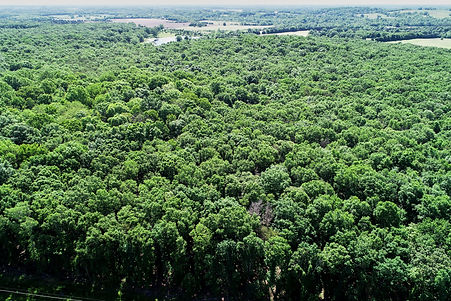5.Decommission Provisions to Protect the County and Taxpayers
Help us protect agricultural-forestry zoned land from large, industrial-scale solar developments
The Importance of a Solar Ordinance


Solar Ordinances Protect Rural Counties
As the demand for renewable energy increases, solar developers are aggressively seeking to build more industrial-scale solar power plants on agricultural land, as opposed to using appropriate land already zoned for industrial use. Rural counties are a prime target. More agricultural land is being threatened.
To protect your county and its residents, a solar ordinance is an important piece of legislation that clearly outlines the provisions of an acceptable application and the construction of a solar power plant.
Counties that do not have a solar ordinance in place are disadvantaged given the complexities of large-scale construction and potential environmental dangers, and small rural counties, in particular, do not have the resources or the expertise to manage and monitor these projects.

Promises Made, Promises Kept
Solar companies make a lot of promises: increased revenue, jobs, little to no impact on the environment and property values. A solar ordinance that clearly defines the provisions of a developer’s obligations will protect rural counties that want to preserve the agricultural heritage and character of their community, the environment and its residents.
5 Important Provisions of a Solar Ordinance
1. Protection of Agricultural Land, Wetlands and Waterways
A strong solar ordinance will clearly govern the siting of industrial-scale solar power plants. We advocate for the avoidance of agricultural land, wetlands and waterways. Solar developers will place large-scale solar responsibly on industrial-zone land, or on marginal or contaminated land. Counties should also consider provisions that promote and incentivize rooftop solar.
Madison County, VA’s Solar Ordinance restricts large-scale solar to industrial-zoned land.
View Piedmont Environmental Council's overview here and policy here.
2. Protection of Historic Resources
Given the number of historic sites in Virginia and around the country, we advocate for the avoidance of historic sites.
View American Battlefield Trust’s report here: Siting Solar in Virginia.
3. Size
A strong solar ordinance will clearly define the acceptable size of a solar power plant allowed in the county: Total acreage of the project, number of acres of panels, total acres allowed in the county, and distance between projects.
4. Setbacks and Buffers
Landowners directly impacted by a proposed solar power plant are the most vocal opponents to any application. Developers claim that solar power plants do not negatively impact property values. If that were true, impacted landowners would not oppose these projects.
In order to protect adjacent landowners and protect the rural character of the community, the ordinance must include clearly defined setbacks and landscape buffers.
5.Decommission Provisions to Protect the County and Taxpayers
The purpose of the Decommissioning Plan is to specify what has to happen when the Facility is no longer operating.
The solar developer will try to ignore and/or downplay the decommissioning issue. In reality, this is a very important issue for a county. The solar developer will try to claim that the net salvage value of the Solar Complex will exceed the cost of decommissioning.
Solar developers usually sell their interest in their Solar Plant after 2 – 3 years of operation. This means that they will be long-gone by the time that decommissioning comes around. In fact, ownership of these solar complexes turns over many times during the life of a system. Most solar developers/operators are LLCs. They can walk away from the Solar Plant whenever they want to.
These solar developers and investors are not in the business to generate power; they are in the business of tax credits. Read more about decommissioning provisions here.
Important Provisions of a Solar Ordinance for Industrial-Scale Solar Plants

Madison County, VA
Members of the Madison County Planning Commission studied solar ordinances for over 18 months before finally adopting an ordinance that restricts large-scale solar to industrial-zoned land.
Key Provisions:
-
Restriction to industrial-zoned land: “Commercial solar energy facilities, as described in this ordinance, are permitted exclusively in zoning district M-1 only by special use permit.” Page 2, Section A-1.
-
Solar Developers pay for County staff time: “The Applicant shall bear all costs to the County for increased staff time...Read more.
-
Minimum setbacks clearly outlined: “All aspects and components of the facility shall...Read more.
-
Avoid historic sites: “No facility shall be allowed on a property...Read more.
Protect Your County with a Solar Ordinance.
Cricket Solar (foreign solar developer) and Maroon Solar have shown us that a withdrawal or expiration isn't enough. These solar corporations have the means and funds to come back, unless a solar ordinance is put in place to protect the land, history and community.

Culpeper is faced with
3 different proposed industrial solar plant projects,
= 4,500 acres of rural land to be destroyed, which is the size of:


1,100 Walmart's
OR
833 football
fields
The worst part, its all for little energy:
Cricket Solar - 1,800 acres (80 MW). Withdrew in July 2019, but has confirmed in fall 2020 that it will submit a revised application.
Maroon Solar - 1,700 acres (149 MW). Applied in July 2020. Withdrew in November 2020. Resubmitted a revised application in Jan 2021.
Greenwood Solar - 1,067 acres (100 MW). Expired in October 2020, but new state legislation passed in December 2020 automatically renewed their conditional use permit. They are pushing to get their revised site plan approved in spring 2021.

Page County, VA
This draft ordinance was approved by the Page County Planning Commission and is going through the final approval process with the Board of Supervisors.
Key Provisions:
-
The ordinance includes provisions to govern small, medium, commercial and industrial rooftop, as well as utility-scale solar operations. Pages 3-4, Section 125-72 and 125-73.
-
Decommissioning costs must be estimated by a licensed professional engineer with...Read more.
-
Maximum acreage clearly outlined: “The acreage coverage of a utility-scale solar...Read more.




